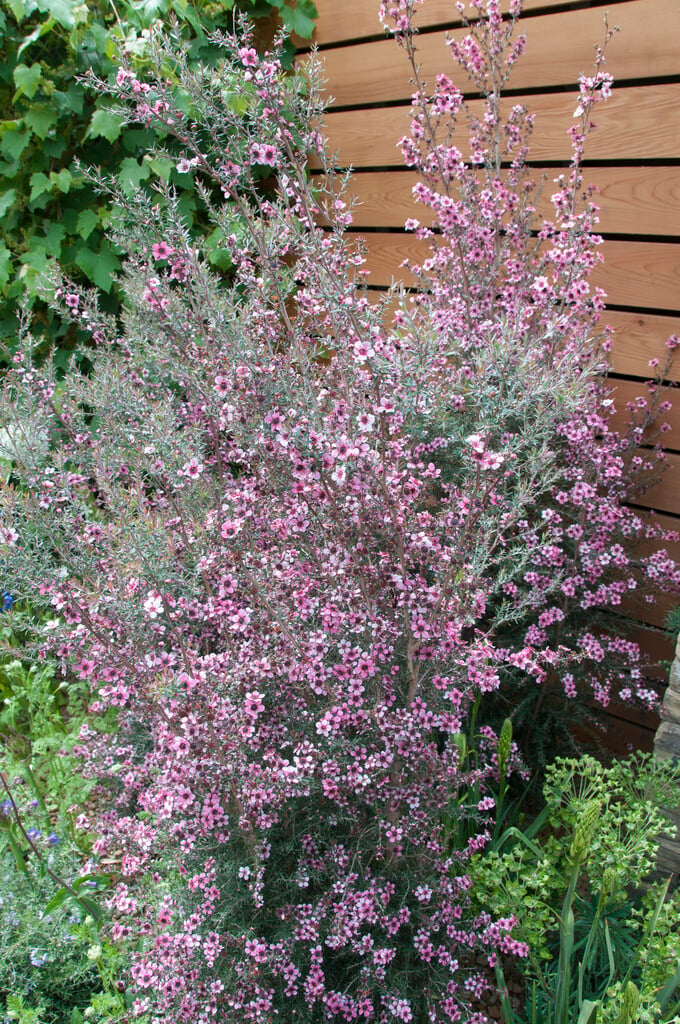Leptospermum scoparium
tea tree
A rounded, evergreen shrub to 2.5m, larger and sometimes tree-like in its native New Zealand. The small, aromatic, dark green leaves are the source of an essential oil used medicinally for centuries by the Māori people. In late spring and early summer it bears a profusion of shallowly cup-shaped white flowers; bees that feed on these flowers produce the famous manuka honey
Other common names
broom tea treeCaptain Cook's tea tree
see morekahikatoa
manuka
New Zealand tea tree
Synonyms
Leptospermum scoparium var. eximiumLeptospermum eximium
Size
Ultimate height
1.5–2.5 metresTime to ultimate height
5–10 yearsUltimate spread
1.5–2.5 metresGrowing conditions
Moisture
Well–drainedpH
Acid, NeutralColour & scent
| Stem | Flower | Foliage | Fruit | |
| Spring | White | Green | ||
|---|---|---|---|---|
| Summer | White | Green | ||
| Autumn | Green | |||
| Winter | Green |
Position
- Full sun
Aspect
South–facing or West–facing
Exposure
ShelteredDrought resistance
Yes Hardiness
H4Botanical details
- Family
- Myrtaceae
- Native to GB / Ireland
- No
- Foliage
- Evergreen
- Habit
- Bushy
- Genus
Leptospermum are aromatic evergreen shrubs or small trees with small, often silky leaves and 5-petalled flowers in late spring and summer
- Name status
Correct
- Plant range
- Australia, New Zealand
How to grow
Cultivation
Outdoors, grow in well-drained, acidic to neutral soil in a sheltered position in full sun. Protect from very cold weather when young
Propagation
Propagate by seed, or root semi-ripe cuttings with bottom heat in summer
Suggested planting locations and garden types
- Coastal
- Wildlife gardens
- Hedging and screens
- Wall side borders
Pruning
See pruning group 8
Pests
Generally pest-free
Diseases
May be susceptible to honey fungus (rarely)
Get involved
The Royal Horticultural Society is the UK’s leading gardening charity. We aim to enrich everyone’s life through plants, and make the UK a greener and more beautiful place.
